Having defined our ‘ideal’ customer segment at Weengs, we now had to address the high churn-rate that was preventing the business from scaling. Our Product team led a company-wide research project on how we might more effectively deliver value to them.
I led a team of 10 in the field studies workflow - visiting over 200 stores - whilst supporting in the other research workflows. We presented our findings to the founders & CEO who’d make the call on how our operating model could simplify, for the better.
The segment of focus were Independent 'Ship from Store’ Retailers. Weengs allowed them to outsource their fulfilment process for any online sales, as we’d collect, pack and ship the goods they’d sold, on a daily basis.
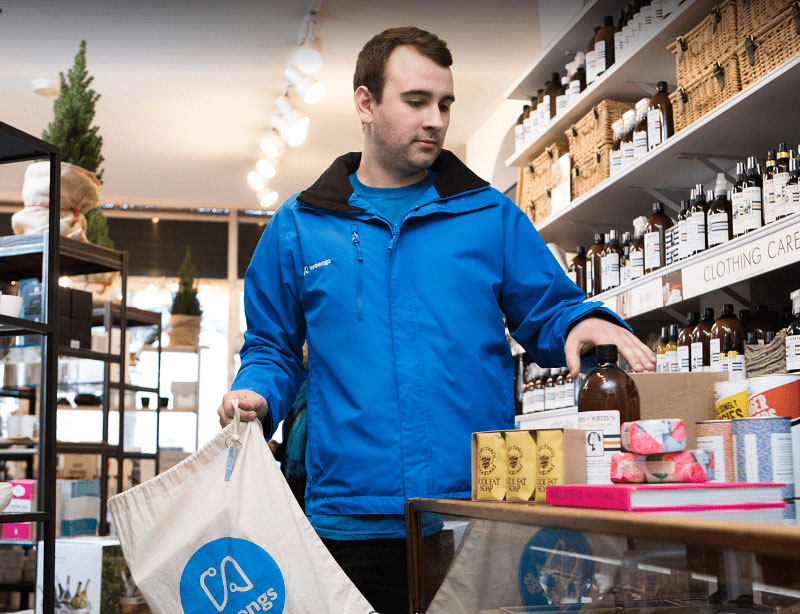
There was a lot of uncertainty around the business direction right now so we had no time to lose! And our first step was to align on what we wanted to find out.
8 of us - including the product team, founders and department heads - assembled early Monday morning, armed with coffee, and ready to put pen to whiteboard.
3 areas were outlined:
We then translated these into 5 key hypotheses to test. And since we needed the insights ASAP, to expedite the process, most of our ~45 office staff would be a part of the research effort! But having so many involved - few with product/research experience - it brought more risk.
More needed to be accounted for across the project, but first that each hypothesis was clearly defined so there was no room for misinterpretation.
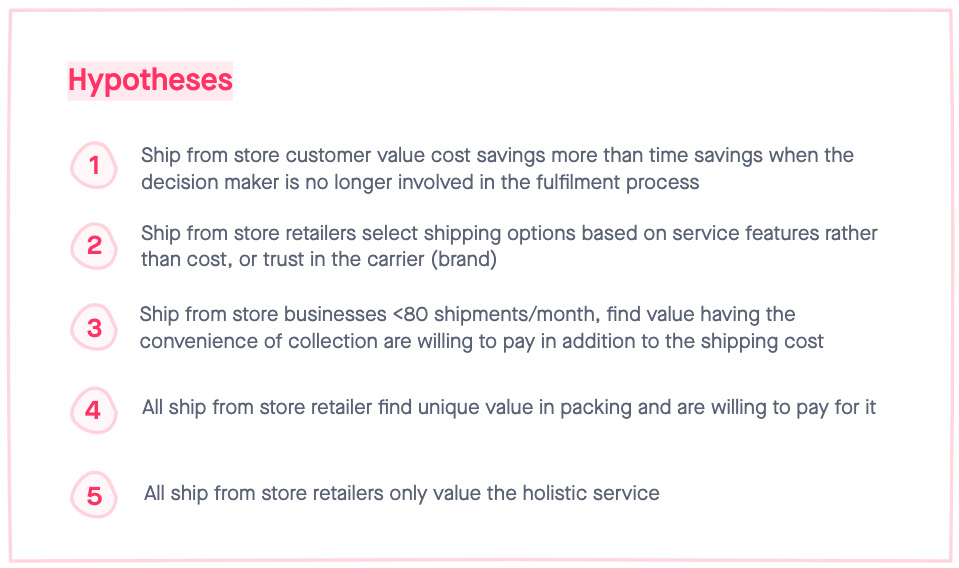
After defining each hypothesis I’d make recommendations on the most suitable methods to test. By the end we had a better picture on what overlapped and were able to group things for efficiency. It was important that our methods would complement each other because each had its own limitations, and we’d risk coverage error.
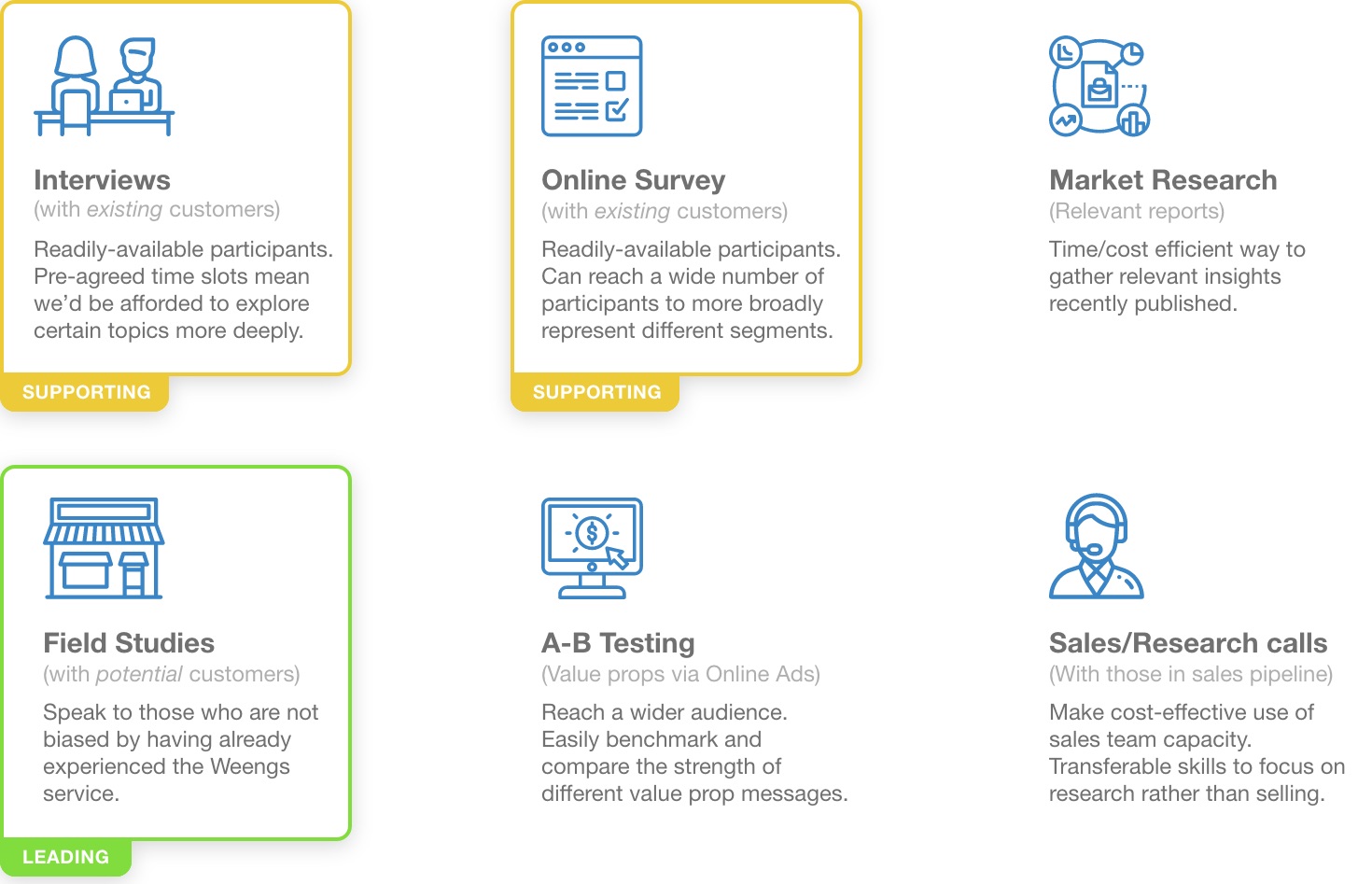
Having decided on the core methods, for each one we assigned leads who’d be responsible for bringing respective insights back to the team. I took the reins of the field studies workflow. Meanwhile lending my experience across other workflows e.g. conducting interviews, strategy and designing questions.
The ultimate goal was to run 50 field studies (5 for each one of 10 product categories e.g. fashion, homeware, florist etc.). So because of the speculative nature of this method, good planning was essential!
In the day or two available I began by working with our customer-facing teams - Sales, Customer Service & Account Management - to harness their vital knowledge and data. Using our database I created a shared map to visualise which retailers we would target/avoid (e.g. avoid existing customers or those that Sales had recently contacted). It was an important reference point throughout the project, and right now it helped us prioritise the most cost-effective areas to ‘attack’.
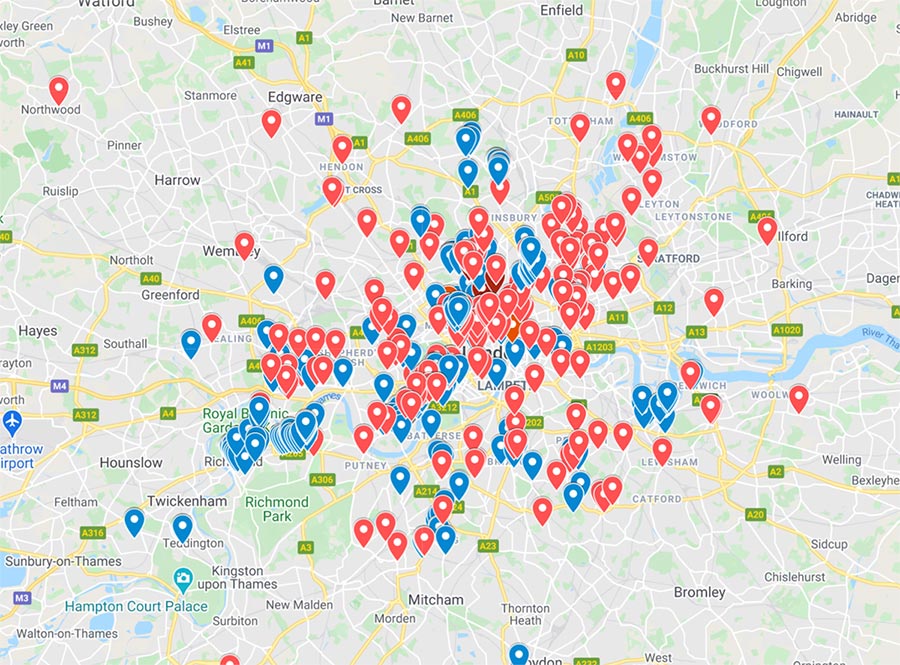
Having drafted questions and printed some fresh copies, I took the afternoon to do a trial run in Shoreditch, close to our office. It was important to use this as a test/iteration so I could address any issues in the approach and note anything that we’d need to consider going forward.
Most notably there were too many questions to fit in the time generally given. Our target were decision-makers or store owners, who’d usually have much more important things to be doing (or at least that's what they told me!). I wasn’t able to scrap any questions, so instead prioritised the order by importance of hypothesis.
Meanwhile other team members shared their availability to help with the studies, bringing our total to 10 which was brilliant to see! So equipped with my findings from the trial run, I helped prepare and align the rest of the team by running a field study workshop. Many of them (across different teams) had customer-facing experience but needed guidance when it came to the research side.
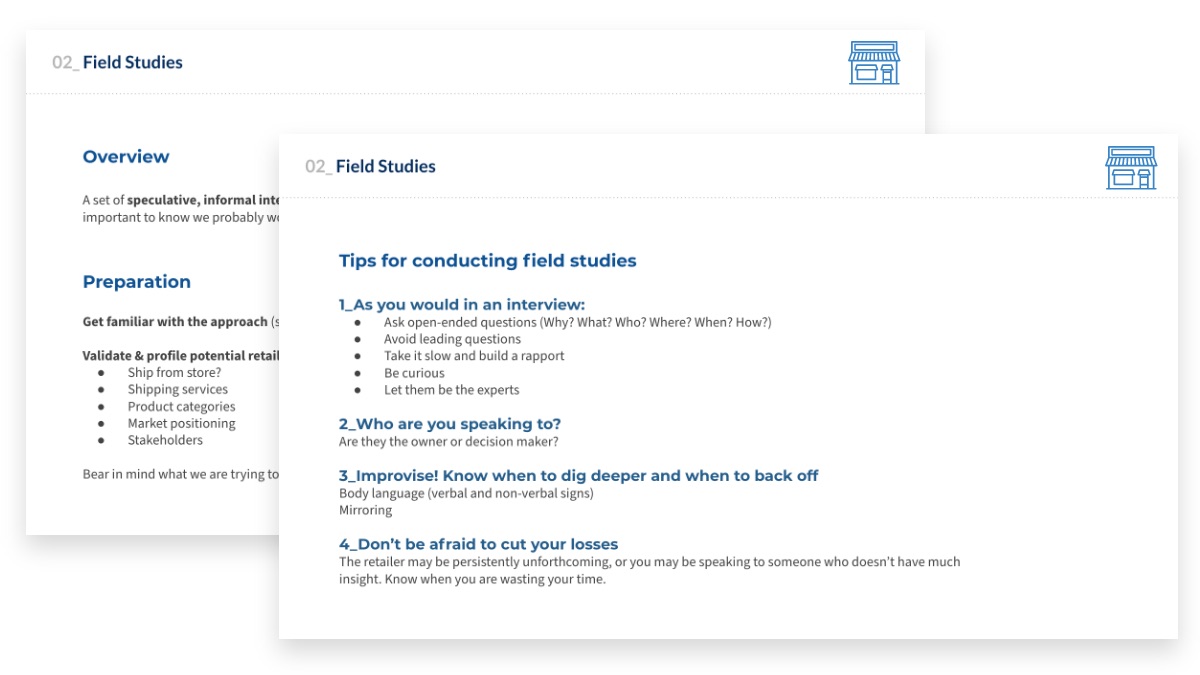
It was time to hit the streets! I’d prepped clipboards with locations and store lists, and our first set of volunteers were ready to go. After a last minute pep-talk we set out in search of insights.
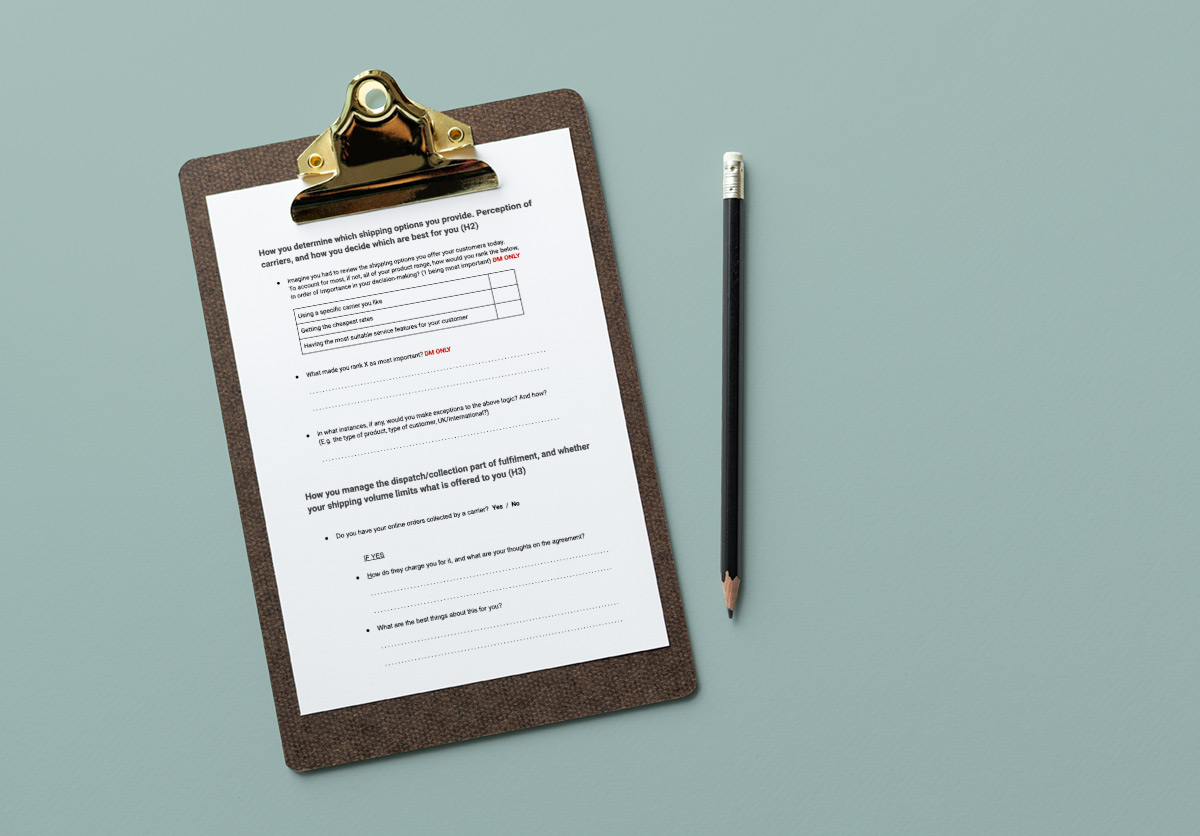
Whilst running the studies (mostly in pairs), I held daily team debriefs where we’d share notable insights and had the opportunity to discuss ways of improving our approach. It empowered the team and allowed us to iterate in an agile way, maximising our rate of success.
After 2 intense weeks we’d completed 34 field studies across different areas of London. 68% of the ambitious target of 50, which still gave us enough useful data to work with. We collectively totalled ~200 attempts which meant an average success-rate just under 1 in 5.
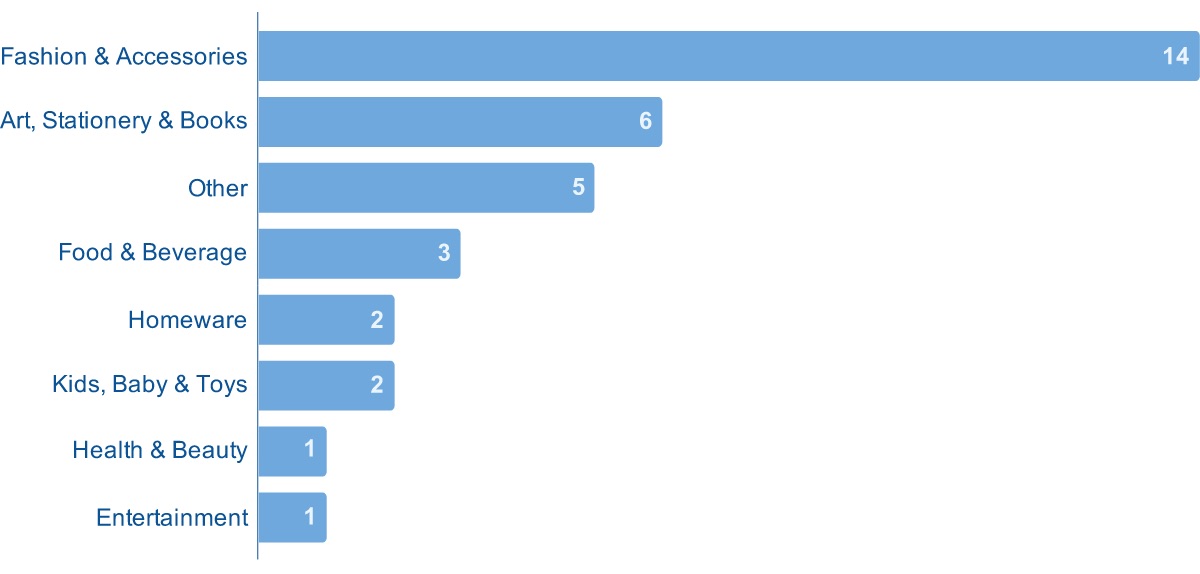
Our data points were weighted in some segments more than others which was accounted for in our findings. This is a good example of the importance of combining research methods when appropriate to ensure fully representative data.
Analysing the transcripts, it became clear what most affects a retailer’s perception of a service like Weengs:
Most of them didn’t feel sufficient pain in their fulfilment process (collect, pack & ship) to consider outsourcing it. A lot of this simply came down to timing, which matched anecdotal evidence from existing customers in our Interview workflow. Commonly they’d joined Weengs at a time when their resources vs demand were at threshold. It forced them to take action, which typically otherwise meant hiring another staff member to cope.
Retailers were especially protective over the ‘packing’ stage of the process (which was our USP vs traditional courier services). It was one of the few areas they could differentiate themselves from the likes of Amazon, providing a branded unboxing experience. Plus it was something they’d built expertise of in-house, packing for minimal cost/damage for their specific product type.
Post-dispatch customer service was the only offering they’d most universally want to outsource.
What went well:
What we'd do differently next time:

After the two weeks of data gathering and a total of 143 ship-from-store retailer interactions, we concluded:
To understand exactly what we need to offer we should prioritise a segment and find out.
How this translates to our initial hypotheses:
We presented the findings to our founders and CEO who took everything away to digest. After a lot of careful thought, they made the tough decision to pivot the business in pursuit of a SaaS alternative in the logistics domain.
Our research initiatives were to be continued!...